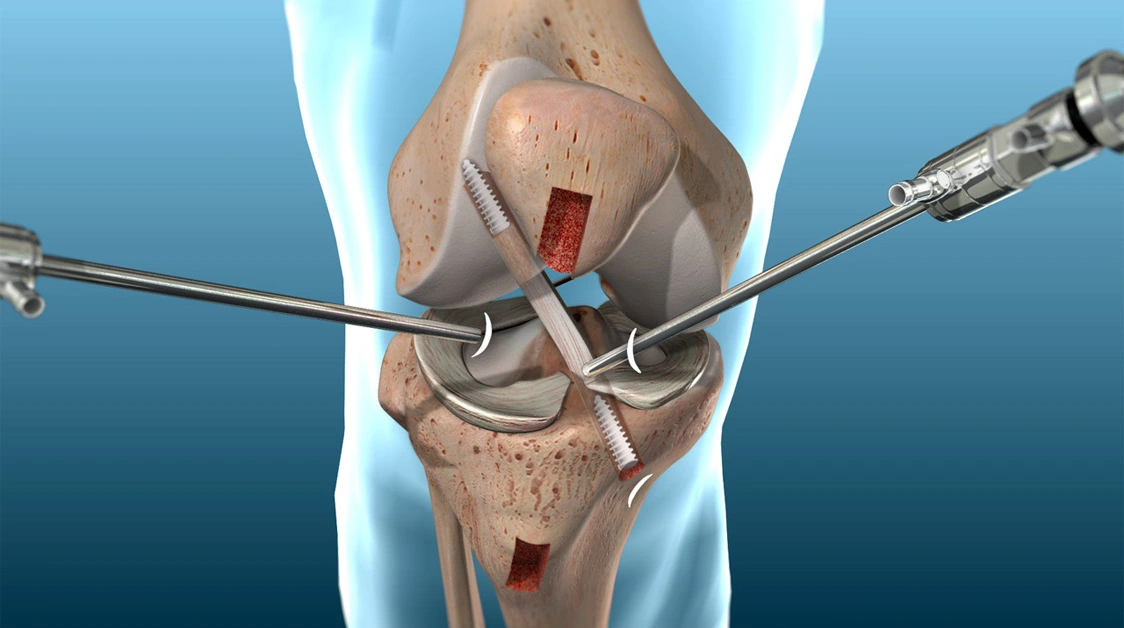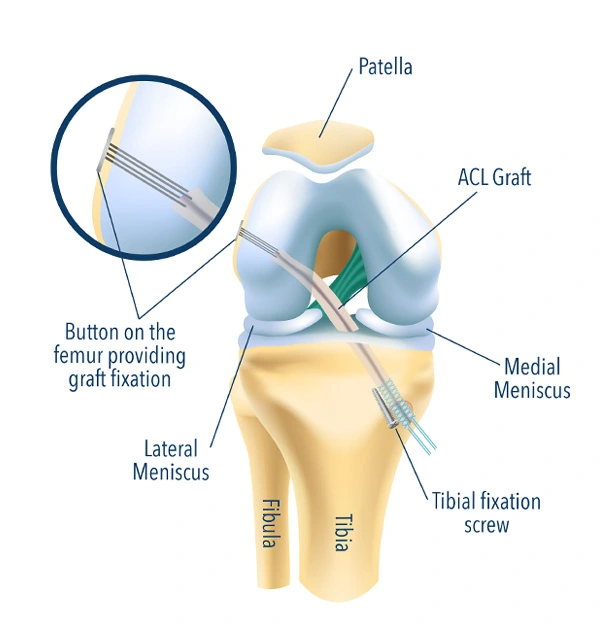
ACL Reconstruction treatment surgery cost Indore
One pair of cruciate ligaments, the other being the posterior cruciate ligaments are present in the knee and arranged in a crossed formation and they are also called as cruciform ligaments. ACL is the main ligament of the knee out of the other four that provides 85% restraining force to the anterior tibia displacement at 30 degrees and 90 degrees of knee flexion. It generally originates from deep inside the notch of the distal femur and has got two bundles namely the anteromedial and the posterolateral.
Some of the symptoms and the signs of an ACL injury may include a loud “pop” or a “popping” sensation in the knee, severe pain or inability to continue the activities, some sort of swellings that begins within a few hours, loss of range of motion and a feeling of instability that is “giving way” with weight bearing.
The strong bands of tissues which connects one bone to the another bone are known as ligaments. ACL, one of the two ligaments cross in the middle of the knee and connects the thighbone to the shinbone that is tibia so that it helps in stabilizing your knee joint.
Some of the causes due to which ACL injuries happened during sports and fitness activities are sudden slowing down and changing direction, pivoting with your foot firmly planted, sudden stoppage, landing from a jump in an incorrect manner or receiving a direct blow to the knee or collision for example, football tackle. Generally, when the ligament is damaged, there is a partial or complete tear across the tissue.
ACL injury is much common in women rather than men though they do participate in the same sport activities. Some of the studies have highlighted the reasons for these differences in risks. Basically, women athletes do exhibits a strength imbalance in their thighs with the muscles in the front of the thigh (quadriceps) which are stronger than the muscles in the back (hamstrings). The other risk factor is that women generally jump in a way that increases stress on their knees. If the muscles of the legs, hips and lower torso are not strengthened well and no training in improving jumping and landing may increase in high risks of ACL injuries.
The primary objectives of ACL rupture are the restoration of the function in the short terms and the long term pathologic changes in the knee’s prevention. A type of treatment which is a reasonable approach in patients who are not athletically active is non- operative treatment.
A number of programs for rehabilitation are mentioned as under:
Goal-oriented rehabilitation for patellar tendon grafts – The goal of the program is to maintain the terminal knee extension and progression towards the 90 degree flexion.
Open kinetic chain (OKC) and closed kinetic chain (CKC) exercises – To minimize the risks of excessive graft strain and patellofemoral compression by using different knee joint motion excursions for every single exercise.

